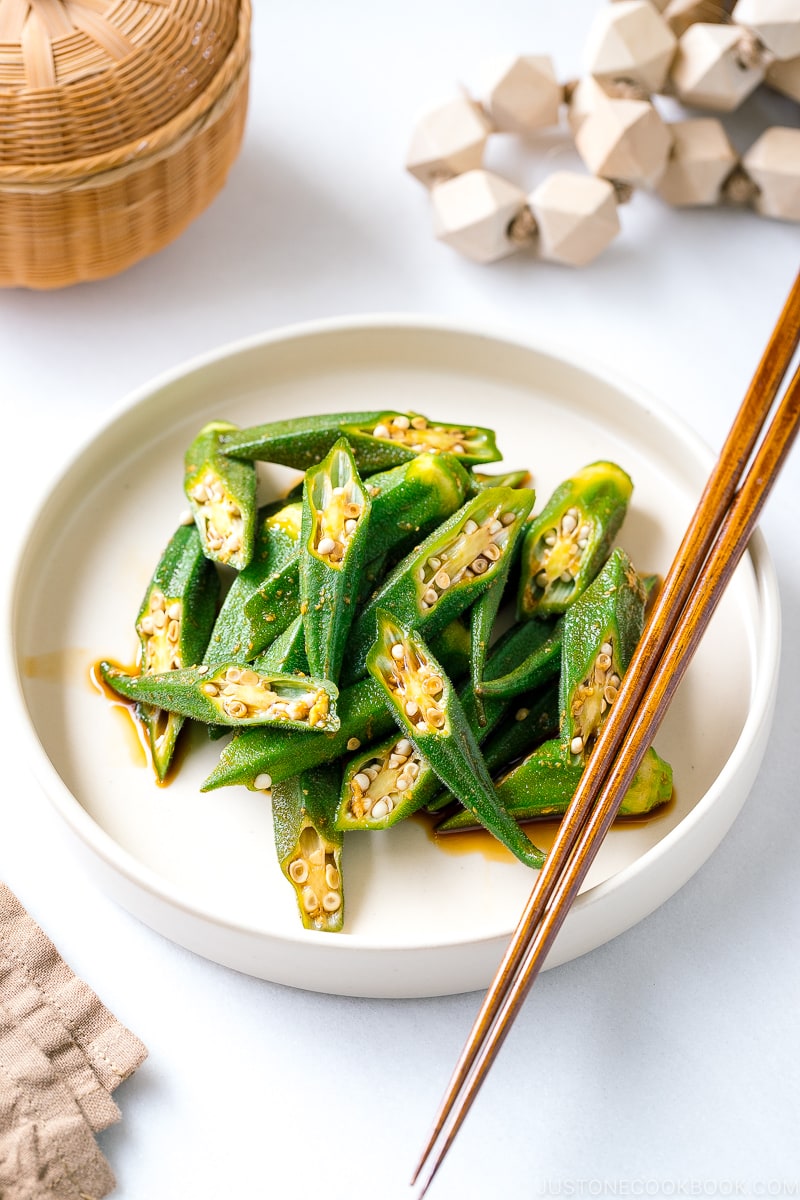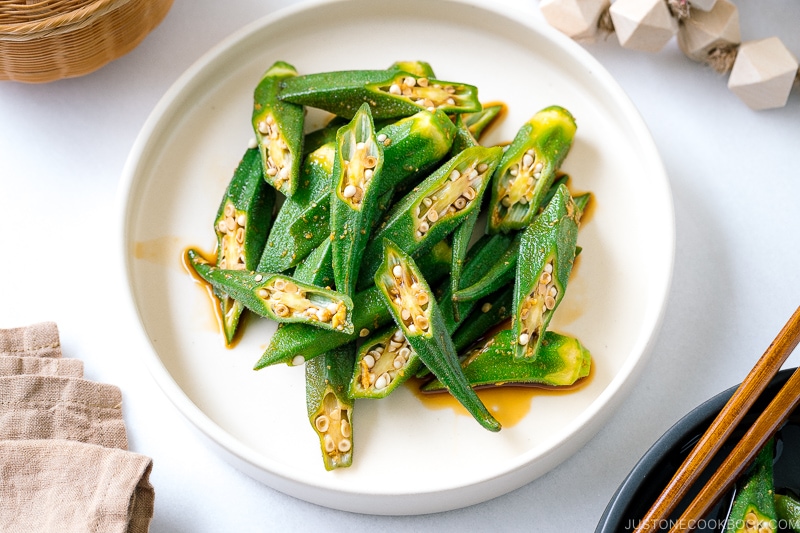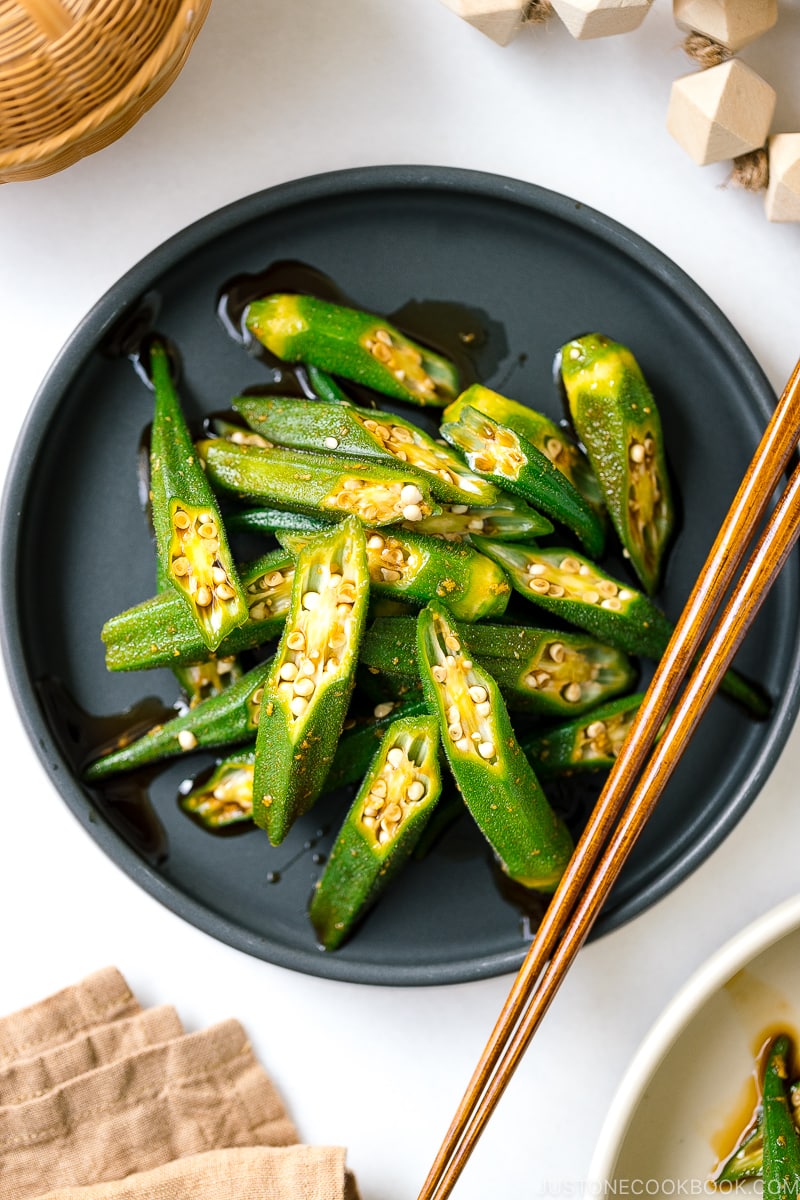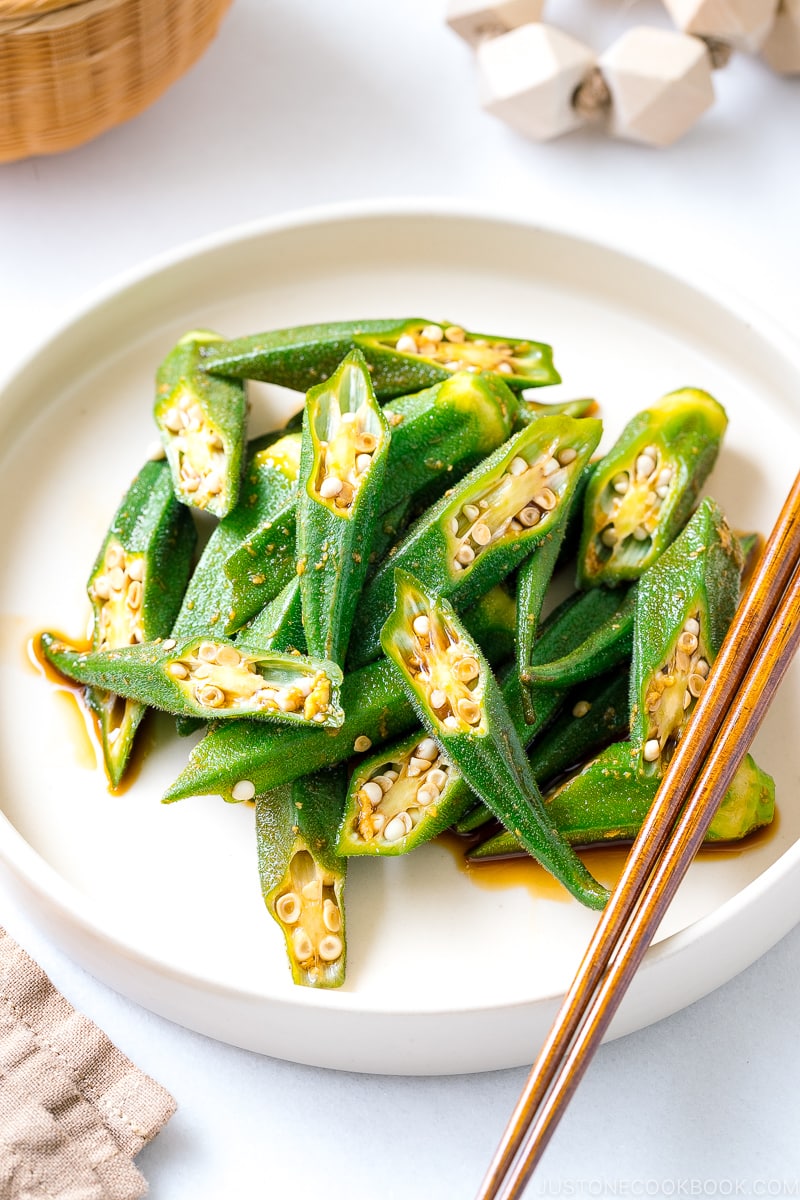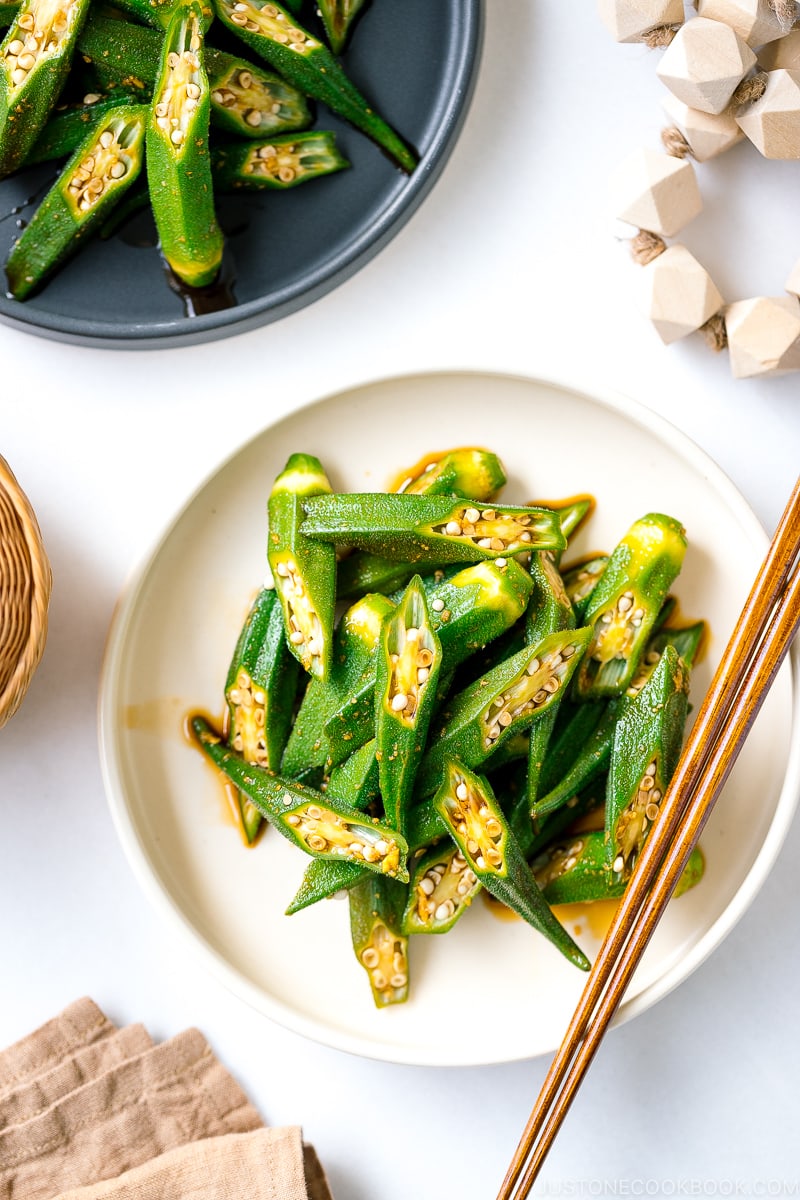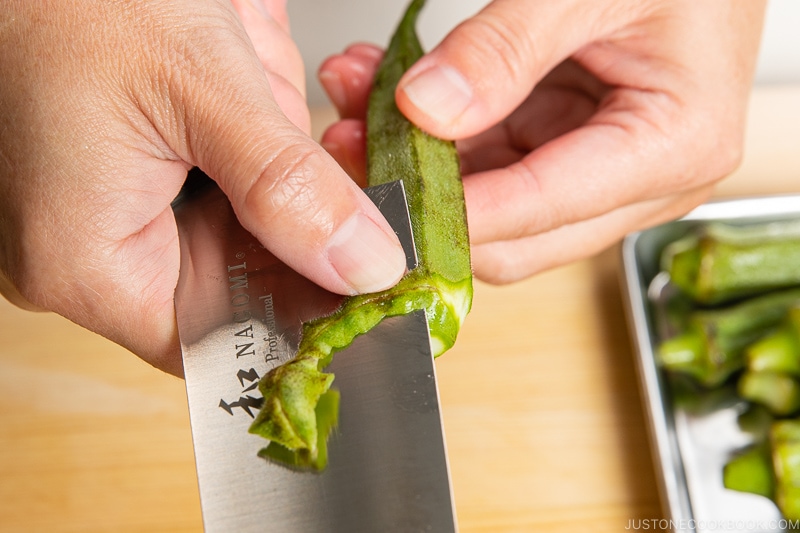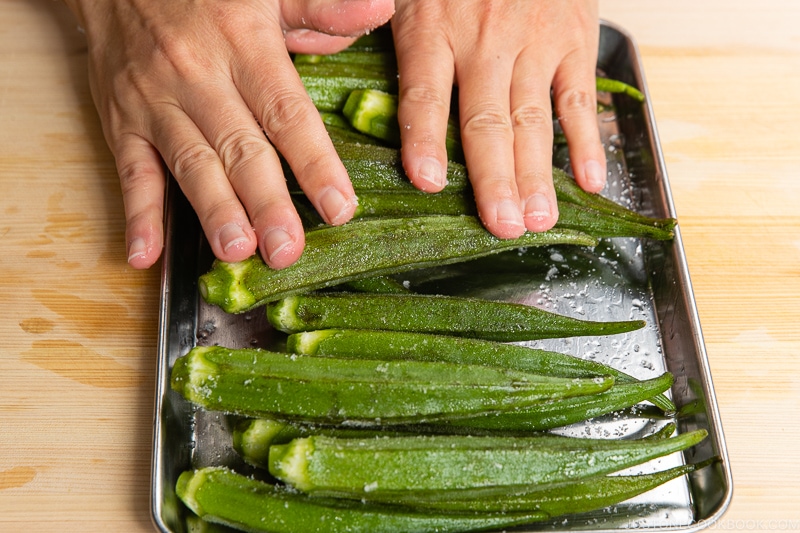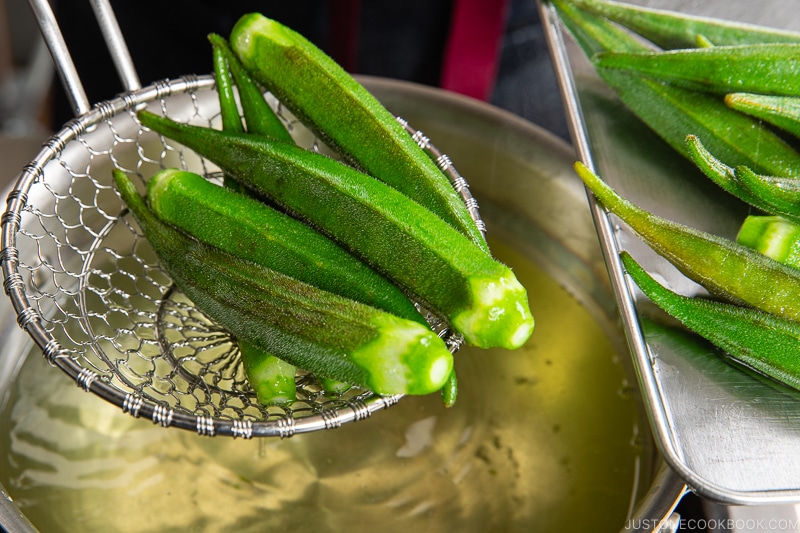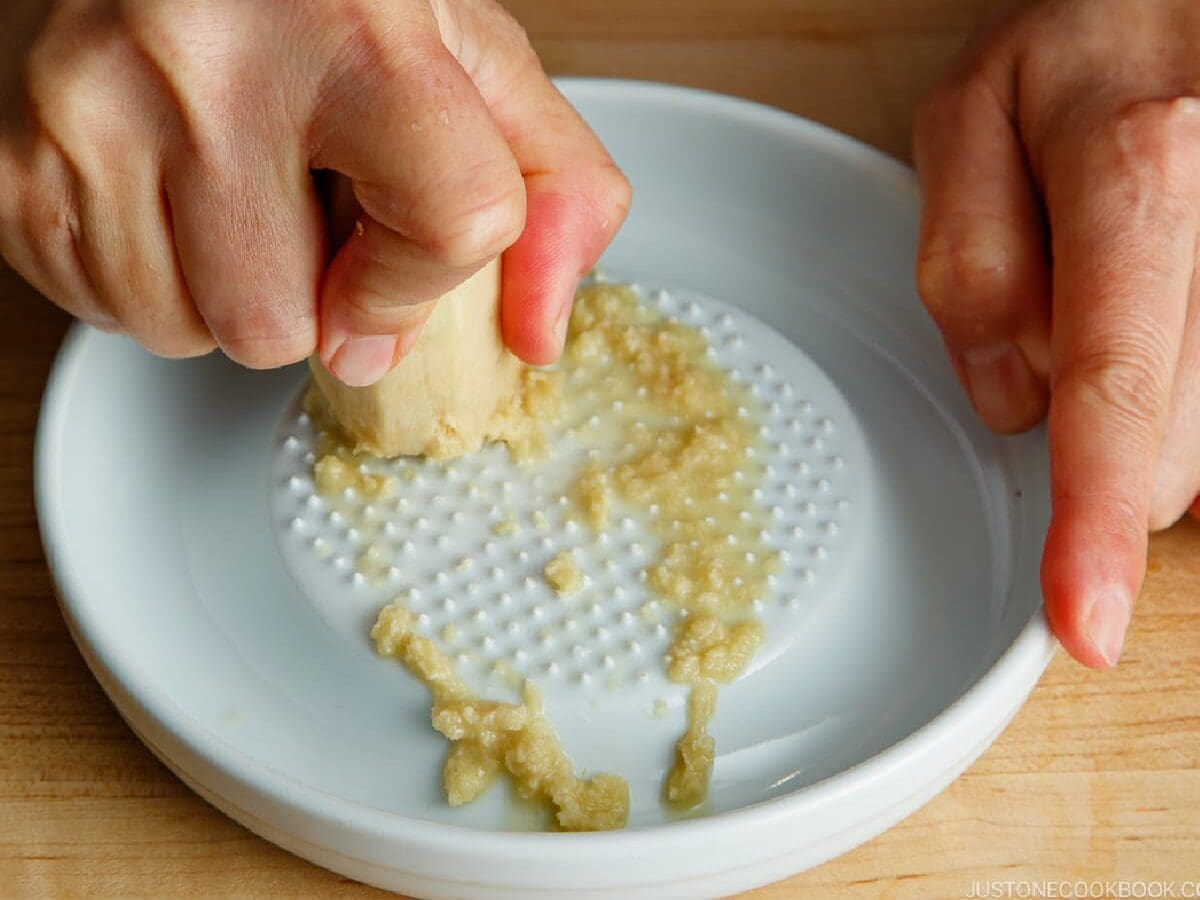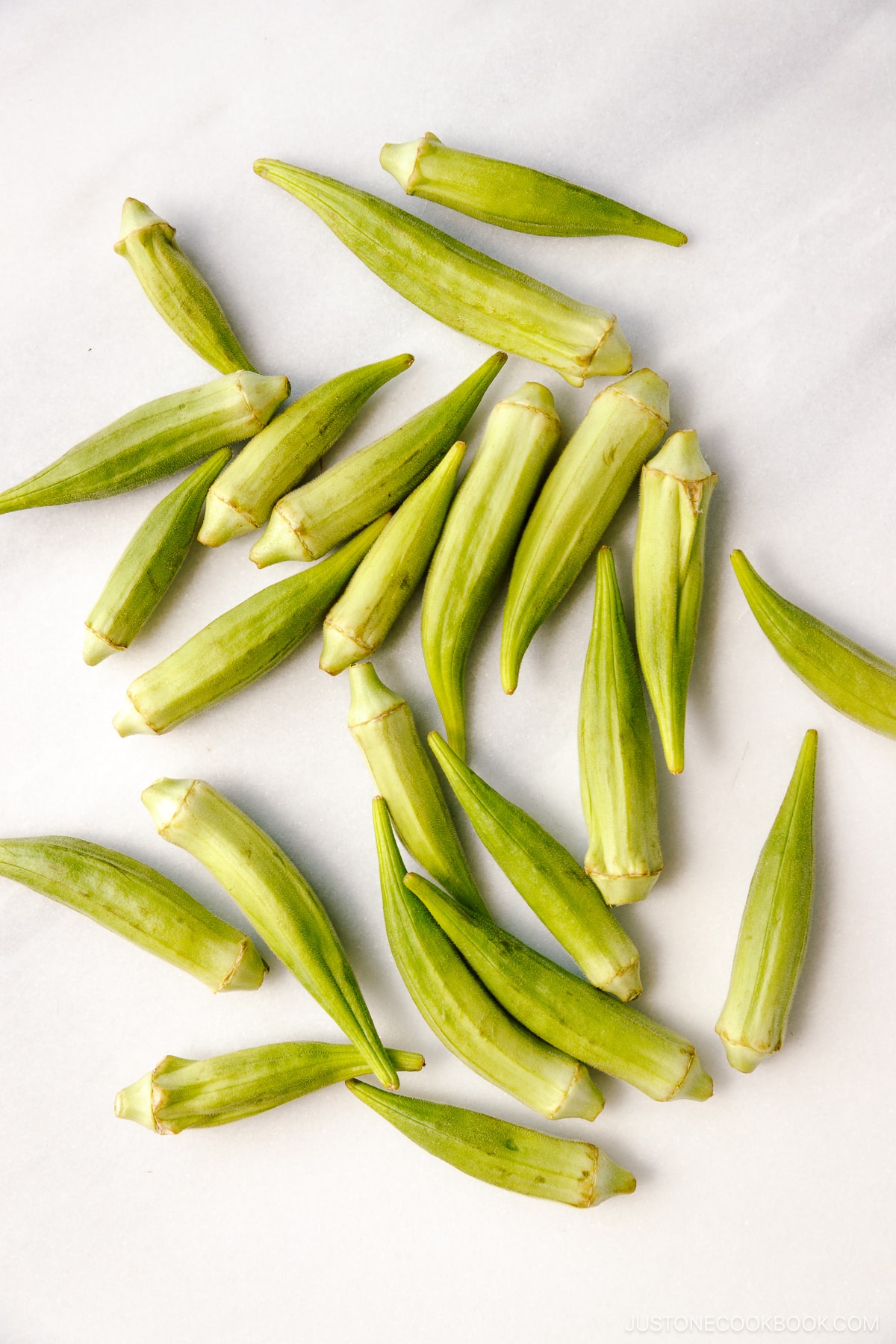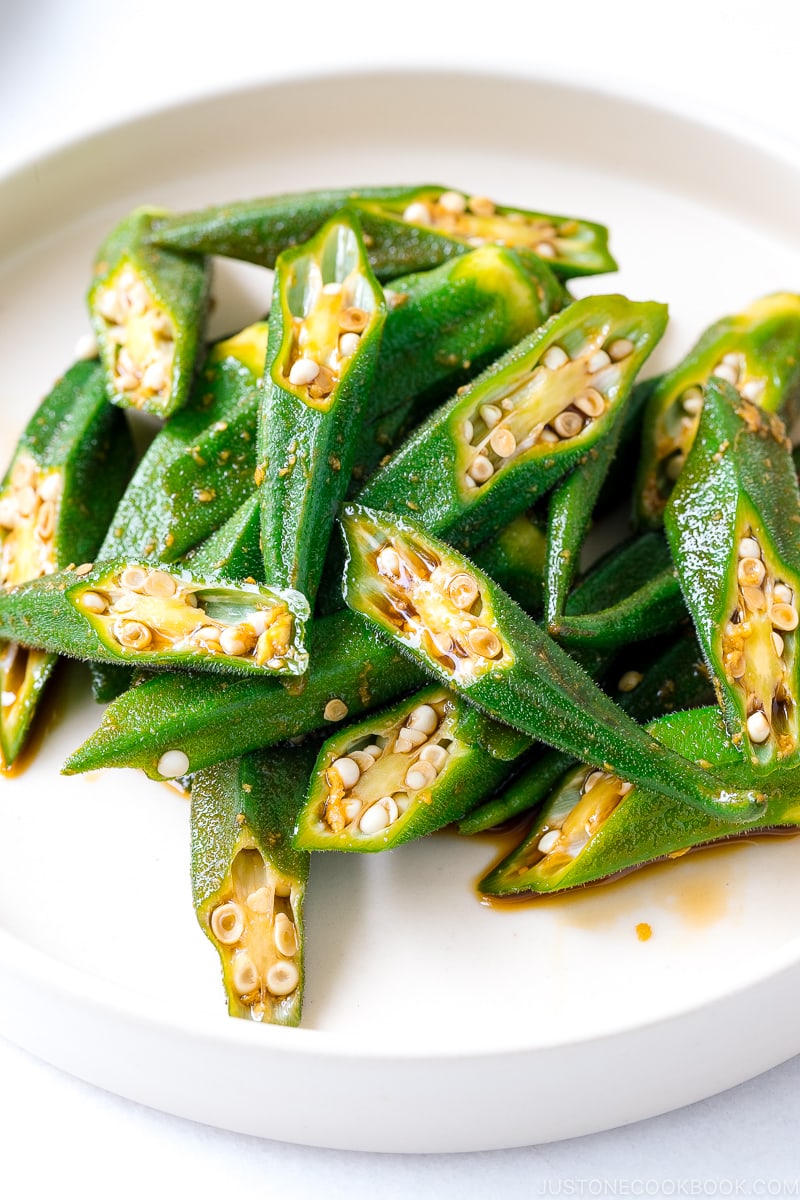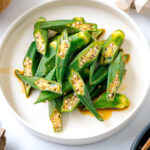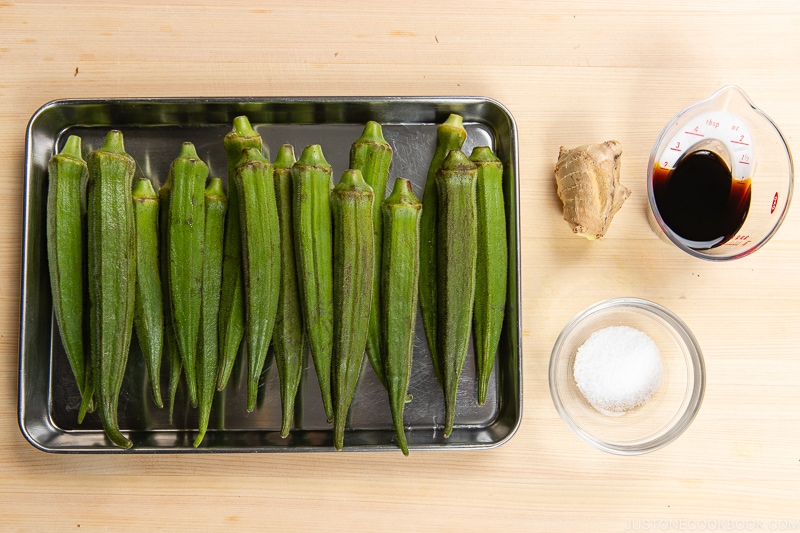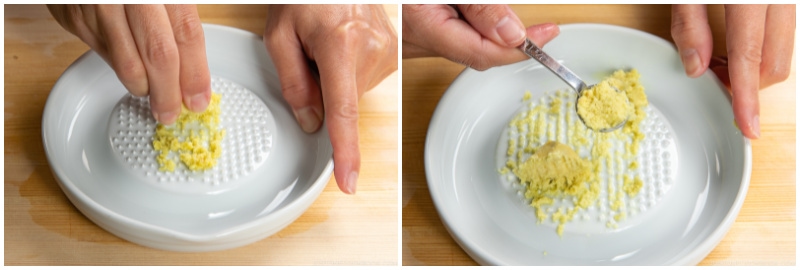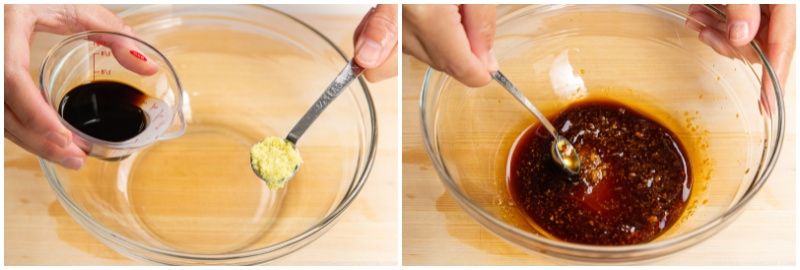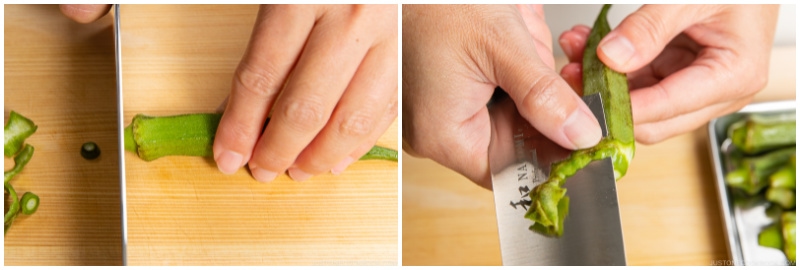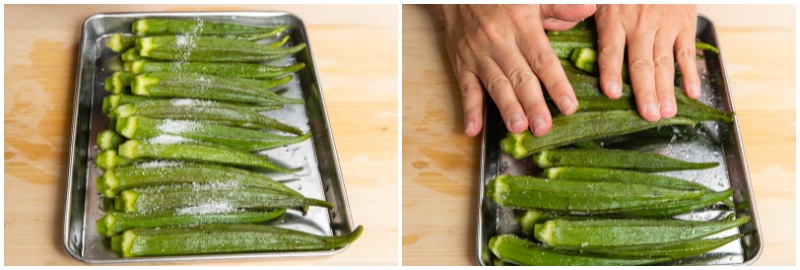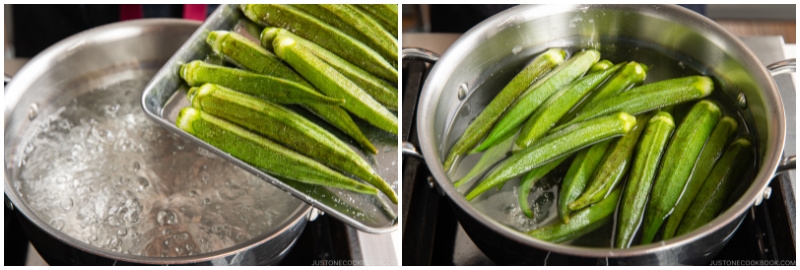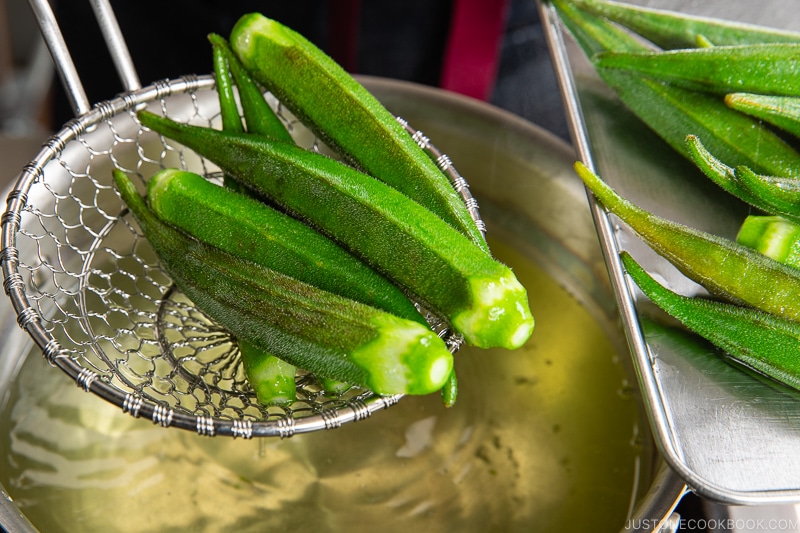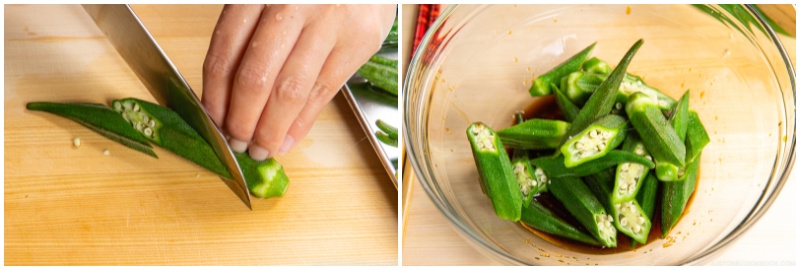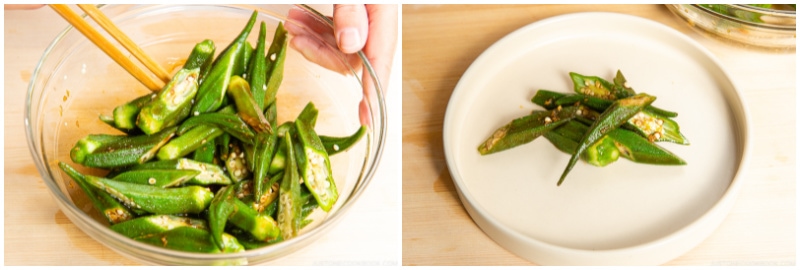My readers across the globe voiced that they often struggle to make easy side dishes that are quick to make and can be served alongside Japanese meals. If you are feeling the same way, don’t give up. I’ve shared some delicious solutions in this roundup, and I have a new one for you! Today’s recipe—Okra with Ginger Soy Sauce (オクラの生姜醤油和え)—requires only three ingredients. I used okra but you can use whatever veggies you have on hand. Not only it is versatile and so easy to pull off, but the recipe also partners well with just about any main you put on the table. You’ll love the simplicity and the flavors it delivers.
What is Okra with Ginger Soy Sauce
Simply put, this dish is made of blanched okra dressed with ginger-flavored soy sauce. In Japanese, we call it okra no shoga-joyu ae (生姜醤油和え). Ginger soy sauce or shoga-joyu (生姜醤油) is a staple flavoring used in everyday Japanese cooking. It’s basically a simple mixture of soy sauce with finely grated ginger bits and juice. We use it as a dipping sauce or as a dressing for cooked or uncooked ingredients. The zesty heat from the ginger elevates the saltiness and umami of soy sauce, making it a pleasant addition to vegetables (or proteins).
Quick Overview of This Dish
Flavor: Ginger and soy sauce both have strong flavors, so they pair amazingly well without overwhelming each other. If you love the spicy kick from the ginger, you can definitely add more, but I usually use 1/4 teaspoon of grated ginger for a tablespoon of soy sauce. Texture: The texture of the dish relies on the vegetable you decide to use. Here, I used okra as they are already in season in California. Slimy foods like okra and natto are good for you, so I try to incorporate more into our family’s diet. This ginger soy sauce goes well with many kinds of veggies and proteins. You’ll find some of my favorites below. Time: You can make the sauce literally in less than a minute! The rest is up to the type of vegetable you use. You could use uncooked fresh veggies, or a veggie that needs a quick blanch or stir-fry before dressing it with the sauce.
The Ingredients You’ll Need
Okra or other ingredient (please read more below) Soy sauce (use gluten-free soy sauce if needed) Ginger
That’s it. It’s seriously quick and easy!
How to Make Okra with Ginger Soy Sauce
3 Cooking Steps to Prepare the Okra
You might find some of these steps (the first two) unnecessary, but I’d like to share how the Japanese typically prepare the okra (even just for your information). We believe these small prepping steps will improve the flavor and texture of the food and reduce waste.
Step 1: Remove the calyx (tough part).
Don’t cut off the entire tough end of the okra. Once the okra is cooked (blanched), the top ends are totally edible! All we need to do is to remove the tough calyx.
Step 2: Salt the okra (2%) and rub them.
Sprinkle salt over the washed okra (roughly 2% salt: 2 g salt for 100 g okra). Then roll them on the cutting board (or a tray) with your hands. The rubbing motion will remove the fine hairs on the okra and improve the texture. The salt also helps bring out the brightness of the green okra color.
Step 3: Blanch for 2-3 minutes.
Blanch the okra for 2-3 minutes. Adjust the cooking time based on the thickness of the okra: 1-2 minutes for small ones and 3-4 minutes for large ones. Toss the blanched okra with ginger soy sauce while they are hot/warm so that they will absorb more flavor. If you love okra, you should also check out my Okra Ohitashi (Japanese Okra Salad) recipe!
How to Grate Ginger
No Okra? Here Are Other Ingredients You Can Use
Because the ginger soy sauce has a salty, bold taste with a spicy kick, I think it’s best to choose vegetables that have some thick, sturdy texture, or ones that have a strong flavor to balance out the sauce. In general, I don’t recommend using delicate leafy salad types of vegetables for this recipe.
Vegetables
Here are some vegetables that I recommend and have personally tried:
Asparagus (blanched* or stir-fried**) Bean sprouts (blanched) Bok choy (blanched or stir-fried) Broccoli (blanched, stir-fried, or steamed) Cabbage (blanched, stir-fried, or steamed) Eggplant (grilled) Green beans (blanched, stir-fried, or steamed) Kale (blanched or stir-fried) Komatsuna (blanched or stir-fried) Snap peas (blanched or stir-fried) Spinach (blanched or stir-fried) Shishito (grilled)
- Blanch in salted water ** Stir-fry with a little bit of cooking oil
Non-Veggies
Other non-vegetable ingredients that I recommend and have personally tried:
Chicken (boiled or steamed) Deep-fried tofu (atsuage or aburaage) (grilled) Fish (salmon, troute, cod, tilapia, catfish) (steamed) Mushrooms (shiitake, enoki, shimeji, king oyster, etc) (sauteed) Shirasu (tiny anchovies) (blanched) Silken tofu (chilled or hot) Squid (boiled or grilled)
What to Serve with This Dish
Yakitori-Style Grilled Vegetables Miso Salmon Fried Chicken Wings Miso Butter Mushrooms in Foil Saba Misoni (Mackerel Simmered in Miso Sauce) Chicken Meatball with Sweet and Sour Sauce
Editor’s Note: This post was originally published on March 14, 2022. It was republished with more helpful information on July 28, 2024.
